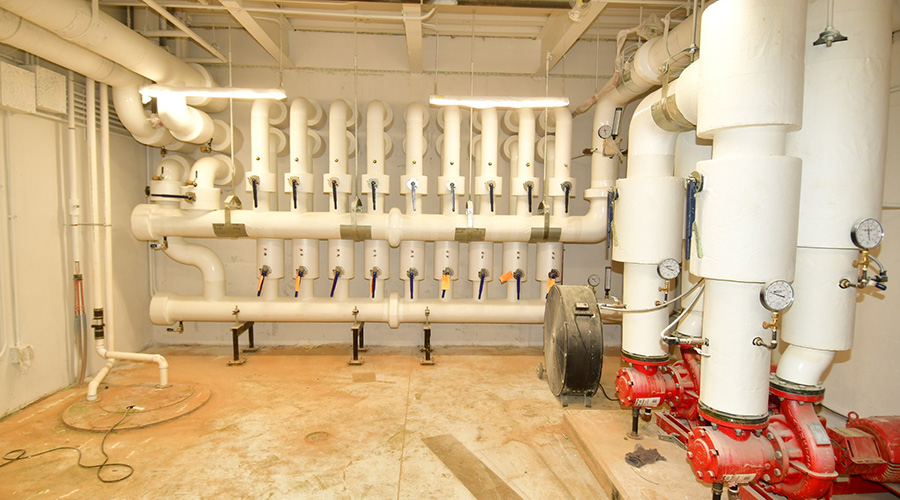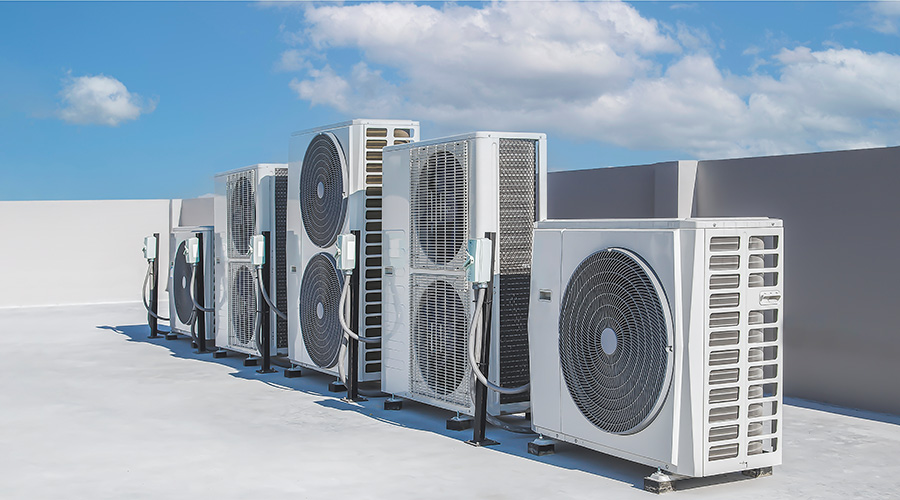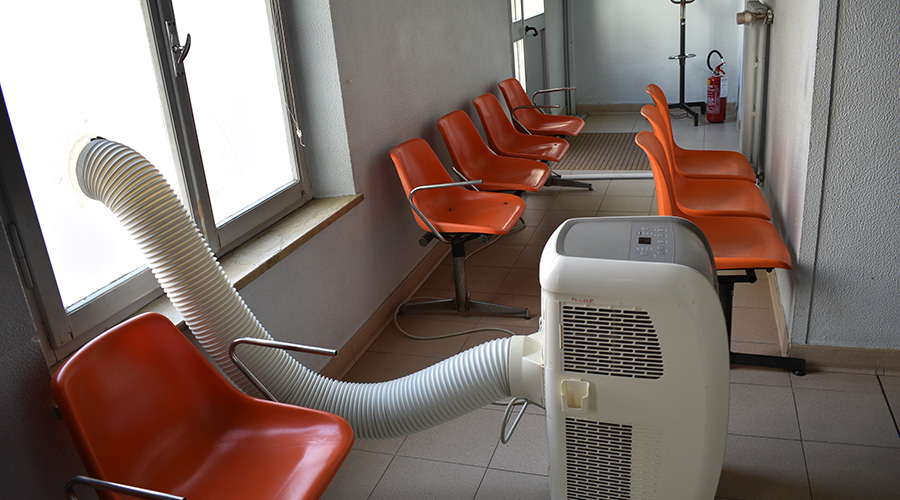As rising energy costs push energy efficiency higher on priority lists, managers revisit two issues — equipment certification and refrigerant management — that can help organizations control costs
Increasing energy prices and an uncertain future are causing managers to once again focus attention on energy efficiency. With building air-conditioning systems representing the single largest use of electricity in most commercial and institutional buildings, it is natural for managers to look to these systems for opportunities to improve their facility’s operating efficiency. Today’s systems offer higher energy efficiencies than those of even five years ago.
There are two distinct tasks that must be performed if managers are to achieve high operating efficiency in their air-conditioning systems; buy efficient, and maintain efficient. The most efficient system in the world will not remain that way if it is not properly maintained. And all the maintenance in the world can not make a system that is inefficient by design efficient.
Buying Efficient Systems
Managers face a range of choices when selecting air-conditioning equipment for new construction, renovation, and equipment-replacement projects. While having choices is generally good, it can create problems for those responsible for selecting the systems and components. For example, new systems promise higher operating efficiency and lower maintenance costs. But when a range of options are available, how does a manager know which system or component is best suited for a specific application?
Not all new air-conditioning systems or system components offer the same level of performance or operating efficiency. Further, how can one tell when comparing different systems and components, that the manufacturers followed the same procedures when rating their performance and the efficiency?
One method managers can use to address both issues is to ensure that the air-conditioning systems and components they are considering have been certified by the Air-Conditioning and Refrigeration Institute (ARI). Equipment that has been certified by ARI indicates that it meets an established product performance standard and that it has been tested and its performance verified by an independent third party.
Being certified is not the same as being rated. Any manufacturer can state that their equipment has been rated in accordance with a particular standard. To be able to state that a piece of equipment is certified, a manufacturer must have participated in the certification program. As a result, certification provides managers with an additional level of assurance that the published performance figures are accurate and have been verified by testing.
Benefits of Certification
Certification offers managers a number of concrete benefits.
First, managers can make equipment purchases on a more informed basis. Since ARI has tested certified products following established testing and measuring procedures, managers can readily make comparisons between different products to determine the product that offers the highest operating efficiency for a particular application.
Certification levels the playing field when it comes to reviewing performance and energy efficiency ratings. Managers are assured that all certified systems and components under consideration for an application have been evaluated and rated using the same criteria. They will not have to waste time and energy trying to compare system ratings when different rating systems have been used.
Second, certification gives managers a more realistic idea of the way a particular system or component will function in a real-world application. For example, the new standards for rating chillers emphasize part-load performance. For years, chillers had been rated only when operating at their full-load rating. In practice, most chillers operate at full-load for less than 5 percent of their annual operating hours. Since efficiency decreases significantly as the load on the chiller declines, full-load ratings presented an unrealistic estimate of seasonal performance.
Switching to a rating that focuses on part-load performance gives managers a better estimate of the seasonal performance of a chiller system and allows them to evaluate different systems under operating conditions that are realistic. A side benefit of the change in the certification program is that it now encourages manufacturers to work to improve the part-load performance of chillers, something that will improve the energy efficiency of nearly every installation.
Finally, certification helps managers to ensure that the systems and equipment they install meet the current mandated energy standards. Purchasers of certified equipment also might qualify for energy rebates from the local utility. While rebate programs differ from utility to utility, one common requirement is that the product be certified to provide a certain level of operating efficiency.
Keeping it Efficient
Buying and installing a high-efficiency air-conditioning system is only the first step toward achieving improved operating efficiency. If that equipment is to operate at peak efficiency throughout its service life, managers must take steps to ensure that it is properly maintained.
While each manufacturer has a list of recommended maintenance activities, refrigerant management is the one activity that will help maintain the operating efficiency common to all systems.
Managers can achieve efficient operation of building air-conditioning systems if the refrigerant charge in those systems is properly maintained. Any loss of refrigerant from the system result in a significant loss in operating efficiency. Similarly, any air introduced into the refrigerant system through a leak reduces operating efficiency. Early identification of any type of leak is critical to ongoing performance.
The best way to identify refrigerant leaks is to use a refrigerant-management program that tracks refrigerant use by each refrigerant-using system in the facility. Managers can expect older chillers to lose refrigerant at the rate of 2-15 percent each year. New-generation chillers that use specially designed pressure vessels and high-performance seals can reduce the refrigerant loss rate to 0.1 percent per year.
To further enhance efficiency, also:
-
establish a refrigerant-use log for each piece of refrigerant-using equipment.
-
establish the baseline of refrigerant use for that equipment and compare it to manufacturer specifications. If a piece of equipment uses more refrigerant than suggested by the manufacturer, use a handheld leak detector to identify the source of the leak or leaks.
-
Continue to track refrigerant use to identify refrigerant leaks as they occur. Rapid detection and correction will reduce the need for replacement refrigerants and help to maintain the equipment at peak operating efficiency.
Purge Units and Efficiency Gains
New, high-efficiency system designs often reduce refrigerant loss with the use of a high-efficiency purge unit. When leaks occur in the low-pressure portion of a refrigerant system, air can be drawn into the refrigerant circuit. Any air that becomes trapped in a refrigerant system reduces both the system’s capacity and efficiency. Purge units to remove air from the refrigerant circuit.
One problem with purge units is that they cannot completely separate the air from the refrigerant. As a result, some refrigerant is lost as the air is removed. Older systems can lose up to 7 pounds of refrigerant for every pound of air removed.
New, high-efficiency purge units reduce this loss to as little as 0.6 pounds of refrigerant per pound of air removed, reducing the demand for refrigerant. All new systems are manufactured using high-efficiency purge units, but managers should consider replacing the purge units on older systems with new units.
Even with a high-efficiency purge unit installed, it is important that technicians monitor the frequency of purge-unit operation. By tracking the unit’s operation over time, technicians can identify and correct the development of an air leak into the refrigerant circuit before it can result in a significant loss of refrigerant or a reduction in operating efficiency.
Eliminating refrigerant and air leaks will help maintain the system’s long-term performance, but managers also must periodically draw a sample of refrigerant and have it analyzed. Contaminants in the refrigerant might indicate other problems that are developing within the refrigerant system that can affect reliability, performance and inefficiency. Oil-content levels above recommended levels can interfere with heat transfer within the system, reducing system efficiency.
Technicians should follow manufacturer recommendations for the frequency of sampling system refrigerants and keep good maintenance records of the results of the analysis for future comparison.
Using established standards to evaluate purchase options and maintaining the refrigerant system will go a long way towards improving the energy efficiency of building HVAC systems. When coupled with a comprehensive preventive and predictive maintenance program, managers will be able to get the most out of their systems while minimizing energy requirements.
Spotlight: ARI
The Air-Conditioning and Refrigeration Institute (ARI) is the national trade association that represents manufacturers of central air-conditioning and commercial refrigeration equipment manufacturing in North America.
For more information on the institute’s equipment certification program and refrigerant management resources and activities, visit www.ari.org
|
Related Topics:











